November 21, 2013 -- Updated 1834 GMT (0234 HKT)
STORY HIGHLIGHTS
- Boeing secured 259 orders and commitments for its 777X commercial jet this week
- Boeing 707 credited with ushering in the golden age of commercial air travel
- Company execs say Dreamliner will be as reliable as the Boeing 777 in six months
(CNN) -- There must have been some pretty wide smiles on the faces of Boeing executives waking up in Dubai earlier this week.
The U.S.-based plane maker secured 259 orders and commitments at the launch of its 777X commercial jet at the Dubai International Air Show -- "the largest product launch in commercial jetliner history by dollar value," touts Boeing.
Boeing says the combined value of the agreements is more than $95 billion at list prices, a better result than some aviation watchers were expecting.
"We knew it was coming, and we knew it would be big, but the size and scale of the 777X order was still very impressive," says aviation journalist Stephen Trimble of Flightglobal.com.
"The only surprise is that no Asian carrier or leasing companies joined the launch party. Usually, the aircraft companies like to launch with a slightly more diverse mix of customers, but that's being a little nit-picky."
It couldn't have come at a better time for the company, stinging from the three-month grounding of its Dreamliner fleet that ended in April this year.
It took a barrel roll to get buyers to bite on the 707.
If it hasn't already, such a large order could usher in another chapter in aviation history.
It wouldn't be the first time Boeing has left its mark.
Though rival Airbus has made a huge impact with planes like the massive A380 (Emirates airline ordered 50 more this week) and is excited about its super-efficient A350 XWB, Boeing's role in the industry stretches back further.
Here are some of the other game changers the U.S.-based aircraft maker has produced.
Boeing 707 -- the golden age of commercial air travel
Many aviation analysts credit the Boeing 707 with ushering in the golden age of commercial air travel.
When Boeing launched the plane in the early 1950s, it had less than 1% of the commercial airliner market.
"(Company) president Bill Allen persuaded the firm's board to make an audacious gamble and develop the first American jetliner," writes Sam Howe Verhovek in "Jet Age," a book about the titans, engineers and test pilots who raced to design a safe and lucrative passenger jet.
"As the industry giants Douglas and Lockheed held off on jets and instead competed with each other to build the most luxurious propeller-driven airliners, Bill Allen and Boeing jumped headlong into the future."
For five years, Boeing couldn't persuade a single customer to buy their new jet -- in either its military or civilian configuration.
Until August 1955, that is, when 350,000 people gathered around Seattle's Lake Washington for the famed Gold Cup hydroplane races.
"Boeing's swashbuckling chief test pilot, A.M. 'Tex' Johnston, took matters literally into his own hands," says Verhovek.
"His demonstration of the 707 prototype, including a completely unauthorized full circle barrel roll of the $18 million jet, stunned the crowd and infuriated Bill Allen, who ordered Johnston into his office for an immediate dressing down."
Legend has it, Allen asked Johnston what the hell he was doing.
His reply?
"Selling airplanes."
Old Tex kept his job and the plane went on to be one of the most commercially successful jets of all time, dominating air travel through the 1960s and into the 1970s.
"The B707 was Boeing's first transatlantic and transcontinental, four-engined aircraft and from this 120-seater evolved the jumbo, the B747," says Phil Seymour, president and COO of theInternational Bureau of Aviation (IBA), an aviation consultancy.
The 707 was intended as a medium-range transport plane but made scheduled flights across the Atlantic and across the North American continent.
A smaller version, the 720, was created for short-to-medium routes with a fuselage nine feet shorter and turbofan engines.
Boeing 747 -- Queen of the Skies
The 747 debuted at the Paris Air Show in 1969.
If we erase launch figures from the picture, the 747 is the Boeing jet that had the greatest impact on the global travel market, says Flight Global's Trimble.
"It really paved the way for the 787 model."
The 747 program was launched in 1966, when Pan American World Airways announced a $525 million order for 25 Boeing 747s.
By September 1966, orders had reached $1.8 billion.
The first 747-100 entered commercial service with Pan American in 1970, on a New York-to-London flight.
"It was game changing at the time," says IBA's Seymour. "Airports had to have wider taxiways and larger passenger terminals.
"Now we see the advent of even more efficient engines and wing design that take this to the next level in terms of lower fuel burn, lower noise and longer range."
Today, Boeing has delivered more than 1,400 747s to airlines around the world -- not bad for a plane now into its fifth decade.
Since its debut at the Paris Air Show in 1969, the company has introduced a number of variations to the 747 family, including the 747-100, 747-200 and 747-300. The most common flown by international travelers today are versions of the 747-400, of which production ended in 2009.
Its successor, the fourth generation 747-8 Intercontinental, rolled out last year.
Boeing announced in October that it will adjust the production rate for the 747-8 program from 1.75 airplanes to 1.5 airplanes per month through 2015 because of lower market demand for large passenger and freighter airplanes.
Boeing 777 -- bridging the gap
The 777 carries more than 300 passengers.
Boeing's 777 program kicked off in 1990 with the 777-200, with the first delivery going to United Airlines in 1995.
It's the world's largest twin jet, carrying more than 300 passengers up to 9,380 nautical miles (17,370 kilometers), depending on the model.
The plane is lauded for bridging a capacity difference between smaller jets and the likes of the 747, allowing airlines to expand their networks by flying on longer, thinner routes with too few passengers to fill a jumbo jet.
It was Boeing's first fly-by-wire commercial jet -- Airbus holds the crown for being first with its A320 -- meaning it used an electronic interface instead of conventional manual flight controls.
"The improvement in engine reliability meant that two engines could be a safe as four, so the B777 soon became the long-range aircraft of choice and now we see the advent of even more efficient engines and wing design that take this to the next level in terms of lower fuel burn, lower noise and longer range," says Seymour.
Carriers have increasingly used the 777 as a fuel-efficient alternative to other wide-body jets, particularly for long-haul trans-oceanic flights.
Since the first 777 entered service in June 1995, the airplane has flown almost 5 million flights and accumulated more than 18 million flight hours.
Boeing 737 and 757 -- short-haul workhorses
Boeing 737. The best selling commercial plane of all time.
It doesn't impress with size or technology.
But if you've ever flown, chances are you've been on a 737.
"The shorter range market cannot be mentioned without reference to the most successful aircraft type of all time, the B737," says Seymour
The best selling jet in aviation history, the twin-engine 737 is credited for giving airlines the chance to offer six-abreast seating, allowing more passengers per flight and a cost-effective way for airlines to amp up regional networks.
Boeing has delivered more than 7,500 737s throughout the world.
Its first flight was in 1967 and it entered service in 1968, fast becoming the go-to plane for short-haul flights.
"It has evolved over time and the new 737MAX provides similar attributes to the new 777X, that is improved engine technology and enhanced wing design," says Seymour.
His personal favorite is the B757, "comfortable enough for transatlantic flights yet also at home on one-hour commuter sectors."
"Boeing have not really replaced it, so despite the generally positive comments I have about Boeing and what it has done for us all, the gap left by the lack of a B757 replacement bemuses me," he says.
On November 28, 2005, Boeing wrapped up the 23-year run of the single aisle 757 passenger airplane with the delivery of the 1,050th and final plane to Shanghai Airlines.
Boeing says more than 1,030 of its 757s are still in service.
Boeing 787 Dreamliner -- future of flying?
The Dreamliner got off to shaky start, but analysts believe it has a bright future.
It was touted as the future of aviation, a super-efficient plane rocking cutting edge technology that thumbed its nose at the size of the Airbus A380 super jumbo and would change the way we fly.
Then everything went wrong.
The three-month global grounding of the entire Dreamliner fleet after an ANA flight was diverted following a battery fire in January of this year was the first such global shutdown in 30 years.
Since the ANA incident, Dreamliner's list of problems have included a United Airlines emergency landing in Houston due to brake problems, a fire on an Ethiopian Airlines Dreamliner at Heathrow Airport and plane groundings and investigations into a faulty fuel pump indicator, an electric panel, a plane oven and emergency beacons.
The more serious issues have since been resolved, with Boeing execs in Dubai this week telling reporters it will be another six months before all the problems are behind them and the plane is as reliable as the 777.
The latest incarnation of Boeing's Dreamliner, the 787-9, took its maiden flight in September, completing a test run of more than five hours. It's 206 feet long -- 20 feet longer than its predecessor -- and holds 40 more passengers. (The 787-8 can hold 210-250 passengers.)
Delivery is scheduled to its first customer, Air New Zealand, in mid-2014.
According to Boeing, 26 customers have ordered 396 787-9s, accounting for approximately 40% of all 787 orders.
The 787-9 won't be the final iteration of the 787 aircraft.
In June, Boeing announced the launch of the 787-10 Dreamliner.
Final assembly and flight tests are scheduled to begin in 2017, with first delivery tentatively scheduled in 2018.
The company says the 787-10 will fly up to 7,000 nautical miles and have seating for 300-330 passengers.
Abu Dhabi-based airline Etihad added 30 of the 787-10 planes to its current deal for 41 Boeing 787-9 jets in Dubai this week.
"Its early entry into service problems are due to the leap in technology it has made, but in my opinion it will live up to its promises in the long term," says Seymour.
"Its composite structure and move to electric systems do really make it a game changer."
Boeing 777X -- reliable efficiency
Middle East-based airlines are pushing production of the 777X.
The just-launched 777X is Boeing's attempt to balance the best of the 777 with the cutting edge technology of the 787.
It's early days with this plane and time will tell what role it will take in shaping the travel and aviation industries.
Notable changes include a longer, composite wing and a new GE engine, which are enough to make it 12% more efficient than the competition, says Boeing.
"Obviously, Boeing decided that a new wing and a new engine were enough, so they didn't need to recapitalize the supply chain for the 777 fuselage," says Trimble.
He adds that Boeing may do new things with the fuselage to make it lighter, such as switching to an aluminium-lithium material, although the company hasn't confirmed that.
"They also backed away from the electrical architecture of the 787, and use conventional pneumatics to pressurize the cabin and de-ice the wing. We'll see if their bets pay off."
If Boeing had gone down the route of taking the all new 787 design and systems into the 777 market the development phase would have delayed the entry into service by around five to eight years, Seymour says.
"Boeing could not afford to wait that long, as the Airbus A350 XWB would have taken too much market share," says Seymour. "So taking the successful 777 and developing it provides a balance between known reliability and efficiency.
"The new wing/engines combination should provide exactly what the airlines want -- reliable and efficient aircraft."
The 777X family includes two jets: the 777-8X and 777-9X. The 8X will offer a range of more than 9,300 nautical miles and have room for 350 passengers.
The 9X will have a range of more than 8,200 nautical miles and fit 400 passengers.
As of this week's launch, the buyer list for the revamped 777 is made up of Lufthansa with 34 airplanes; Etihad Airways with 25; Qatar Airways with 50 and Emirates with 150.
Production of the 777X is scheduled to begin in 2017 and first delivery is targeted for 2020.
Who's calling the shots?
The big story in Dubai this week was the Gulf airlines and their deep pockets -- their spend is helping fuel orders for the types of commercial airplanes now being developed and produced.
"There is little doubt that the 777X and A350-1000 evolved out of Middle East carrier demand for long-range large aircraft," says Seymour.
"To some extent these aircraft could be seen as a threat to the established legacy carriers in Europe, providing the Gulf carriers with even more fuel efficient and long-range competition. It was inevitable that the first orders for the 777X would be from the Gulf region."
"United Airlines launched the original 777, and was actually once a sister company of Boeing in the very early days of commercial aviation," Trimble explains.
"So they used to have the largest role in shaping the requirements. That role drifted to Asia and especially Japan on the 787. Now, that role is played by the Middle East. As they are the big spenders, it makes sense that Boeing wants to make sure they are happy first."


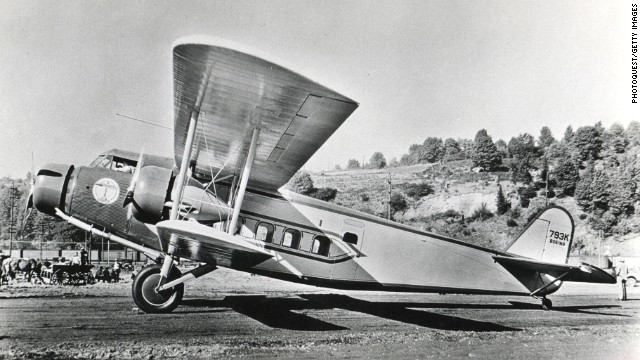 Built in 1928, the Model 80 was America's first airliner designed to transport passengers on a scheduled service. It had room for three crew, 18 passengers and 408 kilograms of cargo. The fuselage was covered in fabric. Pilots accustomed to open-air cockpits complained about the enclosed flight deck. Cost: $140,000.
Built in 1928, the Model 80 was America's first airliner designed to transport passengers on a scheduled service. It had room for three crew, 18 passengers and 408 kilograms of cargo. The fuselage was covered in fabric. Pilots accustomed to open-air cockpits complained about the enclosed flight deck. Cost: $140,000.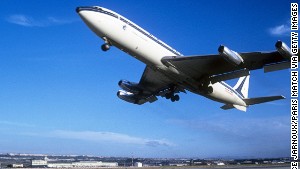
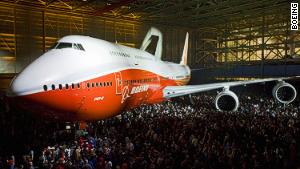
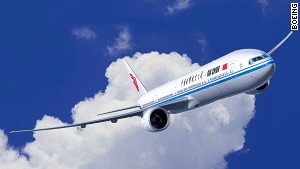

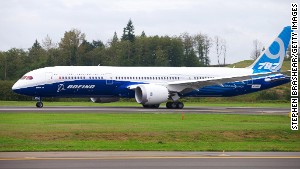
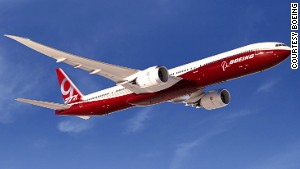
No comments:
Post a Comment